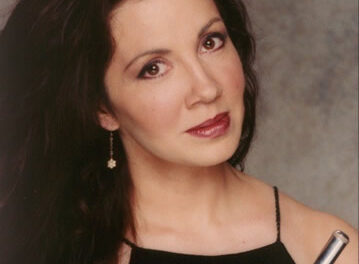Part IV of Johann Sebastian Bach’s Klavierübung is devoted to the Aria with 30 Variations known as the Goldberg Variations, S.988, composed, in 1742, with a two-manual Clavicimbal (harpsichord) in mind, for Count Hermann Carl von Keyserlingk, of Dresden, whose intent was to have Johann Theophil Goldberg, a student of Bach, play it for him – to put him to sleep. (Portions of this account may be apocryphal.) The commission was a golden chalice, filled with 100 gold coins. Those evenings with Herr Goldberg at the keyboard and the Prince on his way to neverland were (if true…) perhaps the only times in the history of this incredible score that it was used as a cure for insomnia. Today we know it in both harpsichord and piano guises, and it works quite well either way, according to the skill of the executants and the preference of the listeners. But Bach’s music lends itself, perhaps more than anyone else’s, to adaptations and instrumental substitutions.
And so it was that, early on the Sunday evening of Memorial Day weekend, in the theatre that usually accommodates the dramatic undertakings of the Burning Coal Theatre Company, three of our region’s finest string players – violinist Carol Chung, violist David Marschall, and cellist Bonnie Thron – offered the third and last of a series of readings of the Goldberg Variations in a version for string trio crafted 25 years ago by violinist and conductor Dmitry Sitkovetsky. It wasn’t mentioned in the PR surrounding these concerts or in Marschall’s introductory comments on this occasion, but Sitkovetsky is a world-class violinist – the son of world-class pianist and pedagogue Bella Davidovich – who has made a remarkable transition to conducting while concurrently retaining his solo violin chops to an astonishing degree. He is currently serving as music director of the Greensboro Symphony, where his devotion to orchestral literature and chamber music are virtually equal – uniquely within our state – he offers his visiting orchestral solo artists in evenings of chamber music as part of virtually every subscription pair he directs in the Gate City.
Sitkovetsky’s transcription was heard in Greensboro last May, but, to my knowledge, it’s never been done in the capital city.* It’s a winning re-working, for the quite different colors and textures of the three instruments allow the score’s many felicitous delights to emerge with much greater clarity than even the most brilliant and adept solo keyboardist can manage on his or her own. Thus even listeners who have heard this music countless times would have been amazed at the revelations these three artists brought to the score. Clearly, we’d never heard this sublime and inspired music in quite this way before, and the result – when all was said and done – was that it emerged new and fresh and vibrant, as if one were experiencing it for the very first time.
But there was more, for Quercus (which is the name these artists have adopted for their ensemble – it is the genus that includes oak trees, symbols of the City of Raleigh), took the added risk of inviting a visual artist, Edwin (“Abie”) Harris, NCSU’s University Architect Emeritus, to illustrate – literally and figuratively – his reaction to and impressions of the performance as it unfolded. To do so he armed himself with an assortment of oil pastels, a pallet knife or two, and a large white surface, clamped to an easel, lined off with masking tape to produce two large squares at the top – for the introductory Aria and its repeat, at the end of the piece, and 30 smaller ones beneath, each representing a variation. It was at first fascinating to observe this process, and it was a great help to score-keepers in knowing precisely where we were at any given moment (for it is very easy, even for those who know the music well, to loose track of which variation is currently being performed…).
All music has structure, but this music is built almost architecturally, so who better to re-imagine it than an architect/artist? Harris clearly loves the work, and as it happens, this artistic effort was his 39th in what is perhaps an ongoing series. But I am not sure it should continue much longer. There were nine earlier realizations on display alongside the one created on this occasion, and, quite frankly, some of them were much more interesting than what was produced at Burning Coal. It was curious to me that he seemed to hear most of the variations in four parts, although there were of course only three instruments. There were just a handful of colors involved, whereas many music lovers can and often do imagine a great rainbow of color, hue, and shade as music unfolds. Variations in tempi, rise or fall in melodic lines, texture or general mood did not seem to be reflected, resulting in a certain sameness both within individual squares and in the overall finished product.
Would I care to experience iteration 40 or 41? I am not sure.
Would I revisit Sitkovetsky’s transcription, particularly in the hands of these string players? You bet.
*A reader with a longer memory than mine recalls a performance of this transcription at the NCMA in the ’80s that involved, among others, cellist Elizabeth Anderson, of UNCG. jwl











